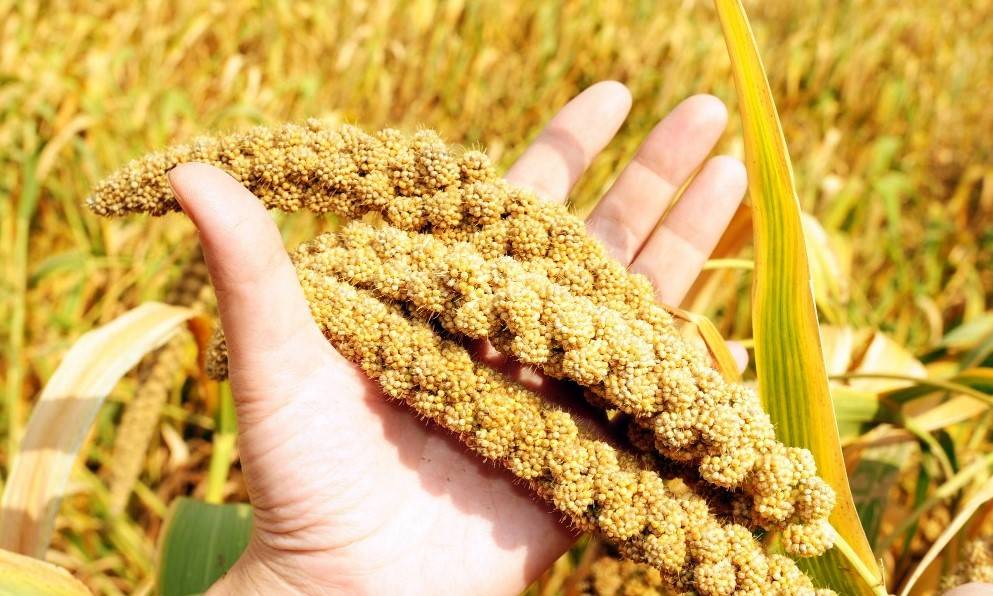
Millets have higher nutritional values than commonly consumed cereals like rice and wheat. This Conclave will be a precursor to the "International Year of Millets - 2023" event (IYoM-2023). Anupriya Patel, minister of state for commerce and industry, will be the Millets Conclave's special guest. Supply chain participants at the Conclave include Farmer Producer Organizations, start-ups, exporters, and manufacturers of millet-based value-added products. A B2B meeting and exhibition will also be held at the Conclave to highlight Indian millets and millet-based products.
The millets export promotion programme also takes place against India's proposal, which received support from 72 nations and resulted in the UNGA announcing 2023 as the International Year of Millets (IYoM) on March 5, 2021. IYoM-2023 is currently being organized by the government on a national and international scale to popularise Indian millets and their value-added products worldwide and turn them into a people's movement.
At the first-ever Millets Conclave, the government also announced that it would publish an electronic catalogue on 30 potential millet-importing nations and 21 millet-producing Indian states. On this occasion, a knowledge book on millets written in collaboration with knowledge partner Yes Bank will also be released. The government intends to make it easier for exporters, farmers, and traders to participate in 16 international trade fairs and buyer-seller meetings to promote the export of Indian millets (BSMs).
The government's plan to promote millets calls for Indian missions abroad to help with branding, publicity, finding international chefs, and finding potential customers like department stores, supermarkets, and hypermarkets for setting up business-to-business (B2B) meetings and direct partnerships. Additionally, potential importers and ambassadors of the targeted nations' foreign missions in India have been invited to showcase a range of millet-based products, including ready-to-eat millet products, and facilitate B2B meetings.
By facilitating the participation of various stakeholders from India in some of the essential food shows, BSMs, and Road Shows, the Center has also planned to organize millet promotional activities in South Africa, Dubai, Japan, South Korea, Indonesia, Saudi Arabia, Sydney, Belgium, Germany, United Kingdom, and the United States of America. Apeda has planned to exhibit millets and its value-added product to promote Indian millets at several international platforms, including Gulfood 2023, Foodex, Seoul Food, and Hotel Show, Saudi Agro Food, and Fine Food Show in Sydney (Australia), among others.
According to the statement, India is one of the world's top millet producers, accounting for an estimated 41 percent of total production. According to the FAO, the total millet production in the world in 2020 was 30.464 million tonnes (mt), with India contributing 12.49 mt, or 41% of the total. Compared to the 15.92 mt of millet produced in the previous year, India's millet production increased by 27% in 2021–22.
India's top five millet-producing states are Madhya Pradesh, Gujarat, Karnataka, Rajasthan, and Maharashtra. The percentage of millets exported compared to total millet production is almost 1%. Most of India's millets exports are whole grains, and the country exports very few millets that have been given added value. According to estimates, the millets market is anticipated to grow from its current market value of over USD 9 billion to over USD 12 billion by 2025. For individual, household consumers to become familiar with millet products, Apeda would also organize food sampling and tasting at the retail level and insignificant local bazaars of targeted countries.
The Center established the Nutri Cereals Export Promotion Forum to encourage the export of potential goods, such as millets, and to address supply-chain bottlenecks for Nutri cereals. The ministry claims that millets have better nutritional values than widely consumed cereals like rice and wheat. The calcium, iron, and fibre content of millets helps to fortify important nutrients for children's healthy growth. Millets are also becoming more prevalent in baby food and nutrition products.
The Directorate General of Commercial Intelligence and Statistics (DGCIS) reports that India exported 159,332.16 metric tonnes of millets in the financial year 2021–22, up from 147,501.08 mt during the same period the previous year, representing an 8.02 percent increase. UAE, Nepal, Saudi Arabia, Libya, Oman, Egypt, Tunisia, Yemen, UK, and the US are India's top millet exporting nations. Indian exports of millets include bajra, ragi, canary, jawar, and buckwheat varieties. Indonesia, Belgium, Japan, Germany, Mexico, Italy, the United States, the United Kingdom, Brazil, and the Netherlands are the top millet-importing nations in the world.
Sorghum (jowar), pearl millet (Bajra), finger millet (ragi), minor millets (kangani), proso millet (cheena), kodo millet (kodo), barnyard millet (sawa/sanwa/jhangora), little millet (kutki), two pseudo millets (buckwheat/kuttu), ameranthus (chaulai), and brown Apeda Chairman M. Angamuthu, Department of Commerce Joint Secretary M. Balaji, Agriculture Secretary Manoj Ahuja, and Union Commerce Secretary Sunil Barthwal are among the senior government officials who will attend the event.
















